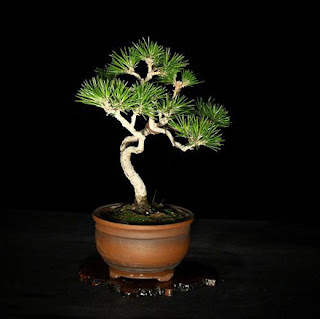In spite of indoor bonsai's are popular among most of the gardeners, the outdoor bonsai are living in the open environment rewards its owner with changes in color, texture associated with different seasons and fissures in tree bark, soil covered with lush green moss will bring you closer to nature. Outdoor bonsai introduce us to more challenges and possibilities.
In Japan, almost all the hardy bonsai are produced are field-grown for between five and twenty years. Nowadays it is rarely collected from the wild but in Japan, they still collect from the wild. In outdoor, selected trees will receive some pruning and shaping before being lifted and examined.
There are two varieties of outdoor bonsai trees, both the outdoor varieties can flower and some bear fruit. Deciduous bonsai tree means leaves will turn color and off and Evergreen bonsai trees keep their needles or leaves.
There are two varieties of outdoor bonsai trees, both the outdoor varieties can flower and some bear fruit. Deciduous bonsai tree means leaves will turn color and off and Evergreen bonsai trees keep their needles or leaves.
Pine, Juniper, Japanese cedar, Chinese elm, Wisteria, and Adenium enjoy full sun. Maples, other deciduous enjoy the partial shade, these can be placed in a position where they get full sun in the morning and some shade in the afternoon hot sun. UV-Stabilized sheet netting is used in tropics to prevents the leaves from scorching, and to keep the plants cool.
Outdoor Bonsai Trees in Japanese Garden.
Outdoor Evergreen Bonsai Trees:
Japanese Black Pine Bonsai:
Black pines are enjoyed their time in full sun and fresh air. In semi-shade, the growth is weak and budding is poor. The needles are shiny, greenish, and stand erect in pairs. The grey bark develops deep fissures in young trees and the branches thicken in a short time. Together they produce a strong, full of rugged character. Prune in late summer to early autumn when the wounds are less likely to bleed resin and repot every two to five years in late spring. Pinching can be done by break off the tips of the new shoots as they extend and pull out all old needles in late summer.
The Scale like leaves are edged with silvery-blue and the shoots curl inwards at the tips. The dense, compact shoots rapidly form clouds of foliage, which must be regularly pinched during the growing season. Repotting to be done every two to three years in mid-spring. Prune branches and thin old twigs in summer, when wounds will heal easily and knocked-off foliage will regrow quickly. Avoid waterlogging, and will not tolerate dry roots.
 |
| Cypress |
 |
| Blue Moss Cypress |

.jpg)













Authentic Provence collaborates strictly with the most renowned stone sculptors and carvers in France and Italy who are responsible for the beautiful restoration and preservation work they have provided on many European historical sites and landmarks. Visit www.authenticprovence.com for more information.
ReplyDeletelandscape
ReplyDeleteChen Wa is a landscape designer company in Singapore that offers garden and modern residential landscape design to bring serenity and comfort to your open spaces.
to get more - https://chenwa.com.sg/
Thanks for sharing this beautiful informative post. Keep on posting.
ReplyDeletecedar trees for sale
Nice blog. Thanks for sharing. We are offering Stone Benchtops Newcastle. Do visit us.
ReplyDeleteKitchen Renovations Newcastle
Kitchen Companies Newcastle NSW
Custom Kitchens Newcastle